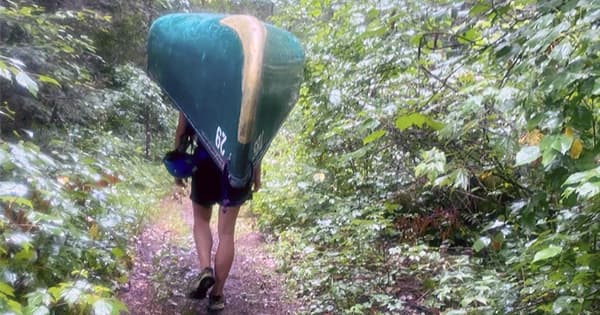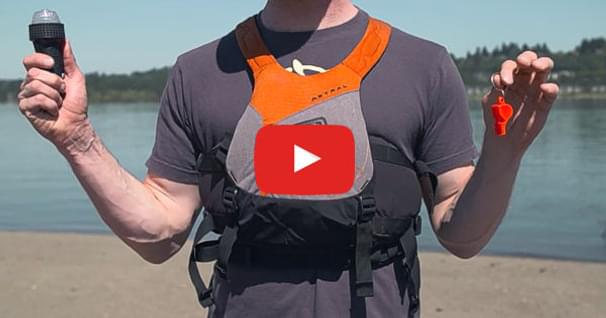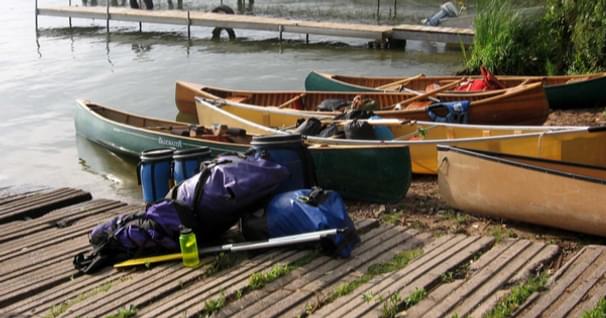5 Tips for Becoming a Keener Portager
The word portage loosely translates to “carrying heavy sh*t” and it is a time when most of us grit our teeth, lather ourselves in bug spray, and pray that we only have to carry one load. We all know the “keener” types who talk passionately about their love of portaging. They insinuate that a little bit of suffering never hurt anyone, and that a canoe trip is not really complete unless you have slogged your gear over a sketchy trail. “The longer, the better!” they say with a cheeky grin. For the rest of us, we carry a just-get-it-over-with kind of attitude.

When I hear the word portage, my stomach turns a little and an instant memory pops into my head of a miserable 3 kilometre portage from a couple of years ago - solo carrying a 70 pound canoe through ankle deep mud with black flies gnawing at my ears, and my shoes rubbing the backs of my heels raw. All I could do in that moment was mutter angrily to myself and keep one foot in front of the other. I arrived at the end of the trail and instantly threw myself into the water to cool down and to hide from the ravenous bugs.
But when push comes to shove, you cannot get to the beautiful, isolated spots without a little blood, sweat and tears. It’s worth it, and to make it a little bit easier, here are 5 Tips for Becoming a Keener Portager:
5 Tips to Make Portaging Easier and More Enjoyable
Be on the same page.
Arrive at the portage trail with a plan, especially if you are travelling in a large group. Start the portage with your whole group knowing details like the general route, the length of the trail, where you are meeting up next, where your first aid kit is packed, and who is carrying what. Don’t sacrifice yourself to the swarms when you land on shore without a plan. Take a moment in the eddie or on the lake to have a quick discussion and plan your portage.
Organize your gear.
Unload your gear into like-piles when you land on shore. Group big items with big items, put paddles all together and clip smaller items like water bottles and bailers to barrels and canoe packs. Keep your PFD on, as it is one less thing that you have to carry. Try to eliminate carrying things unnecessarily in your hands so that you can walk more safely.
Take it slow.
Paddling injuries frequently happen on land and at the water’s edge. Portage trails in remote areas are typically unmaintained and cover challenging terrain. With the added weight of a load on your back, a small slip on a wet rock can lead to a big tumble. Consider sending someone carrying a lighter load first to scout the trail. Many popular canoe routes have canoe rests along the trail, and offer reprise for sore shoulders without setting your canoe on the ground.
Travel in pairs.
Whenever possible, avoid walking portage trails alone. Not only can a partner support you to initially lift your canoe overhead, they can travel in front to help guide your path and help you when you need a break. When canoe rests are unavailable, a partner can guide you to stop, touch the stern of your boat to the ground and hold up the bow end of your boat to alleviate the weight for a short break.
Wear good shoes.
A lot of paddlers choose to paddle in comfortable footwear like neoprene booties and sandals on the water, which depending on the trail may not serve as suitable portaging footwear. Consider investing in a water specific closed-toed shoe that offers enhanced grip and ankle support, or pack an extra pair of running shoes for trips that have a lot of portages.
Portaging is an art, and just like other paddling skills, it takes practice. You may not become an instant keener, but with proper planning and practice, portages gradually become more and more bearable. One day, you may even find yourself standing on a trail with the same cheeky grin so many of us have come to loathe.
A teacher, whitewater canoe guide, and volunteer firefighter, Allyson Saunders lives in the Madawaska Valley in Ontario with her exceptionally perfect dog, Honey. Nature inspired, Allyson can be found on a river, in her garden, on a ski trail or with a paintbrush or a cup of coffee in hand.
Related Articles
Before I was domesticated, I spent more than a decade working paddling gigs between paddling trips.…
So, you are finally out on the water and itching to spend more time outdoors – maybe go a bit further…
You may recall Abraham Maslow ‘s hierarchy of needs from ninth grade social studies. Maslow says, you…



